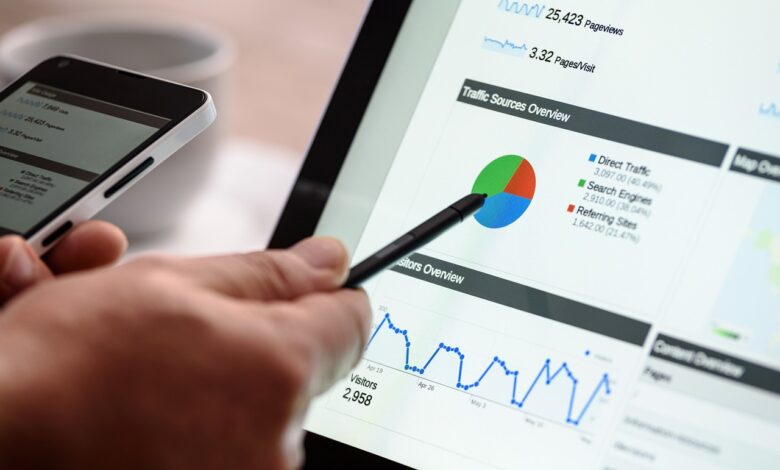10 Best Paid Search KPIs to Track in 2025

Do you feel like your paid marketing campaigns are stuck in a loop, and can’t figure out the root cause?
If yes, then you are not alone.
In paid marketing the success of a paid campaign boils down to tracking and monitoring the right set of paid search KPIs. These KPIs offer an insight into the effectiveness of the campaign, which enables you to determine the key points required to attain your objectives and scale your marketing activities.
If you too are looking to boost the visibility of your paid ad campaigns and reap higher ROI, here are 100 essential paid search KPIs to track for your next campaign.
10 Best Paid Search KPIs to Track
Listed below are 10 key paid search KPIs that you should be tracking for you next paid campaigns:
1. Click-Through Rate (CTR)
CTR reflects how many people click on the ad after seeing it. A high CTR means your ads are appealing to the audiences, and the content you promote is interesting for viewers. This is one of the simplest and most important metrics to watch because it tells you the overall relevance of the ad copy and keywords.
How to improve CTR?
To improve your CTR, ensure your ads are relevant, the assortment of keywords aligned with client interest, and your calls to action are enticing and clear.
2. Conversation Rates
Conversion rate is a key element in your paid search KPIs that measures the percentage of clicks that result in a desired action, such as download or sign-up. This metric determines whether your paid search campaign produces meaningful results beyond traffic.
How to Improve Conversion Rate?
Optimize your landing pages, use clear calls to action, and continually test ad copy to increase your conversion rate.
3. Cost Per Click (CPC)
Cost Per Click (CPC) is one of the most essential advertising metrics and KPIs. It tells you how much it costs you when someone clicks on your ad. Lower CPC can be a sign of a well-optimized campaign. However, it is essential to balance the quality of traffic and the number of conversions obtained from those clicks.
How To Improve Cost Per Click?
If you want to get the maximum CPC, use only high-ranking keywords, adjust bids based on your audience performance, and enhance ad relevance. This will help bring down the costs while ensuring good traffic to your website.
4. Cost Per Acquisition (CPA)
CPA is the best-paid search metric that measures the cost of acquiring customers through paid search. This metric is essential in understanding the efficiency of your campaigns. A low CPA means that you are getting customers at a reasonable price, reducing the cost of acquiring customers and helping to improve profitability.
How To Improve Cost Per Acquisition?
To improve CPA, use high-intent keywords and refine audience targeting to reach users who are ready to convert.
5. Return on Ad Spend (ROAS)
ROAS is a great metric to consider when assessing the performance of your ad campaigns. It determines the revenue realized for each dollar spent on advertising. Monitoring top-level ROAS lets you understand whether the profit received on paid search campaigns is sufficient for further enhancement or requires additional improvements.
How To Improve Return on Ad Spend?
To improve ROAS, optimize ad creatives, focus on targeted audience segments, and adjust bidding strategies based on performance insights.
6. Impression Share
Impression Shares are a critical part of the Google ads metrics list. It shows the percentage of total impressions that an ad received, impacting brand visibility. A low impression share means that your ads are not seen often, and this may be because your bid is too low or you have a limited budget.
How To Improve Impressions?
To improve impression share, adjust bids, and expand keyword targeting to increase ad visibility.
7. Quality Score
Quality score, as determined by Google Ads, measures the relevance and quality of ads, the selected keywords, and the landing pages. A high-quality score can lead to lower CPC and better Google ad positioning, making it an essential metric to track.
How To Improve Quality Score?
To improve your quality score, focus on aligning ad copy, relevant keywords, and landing pages, which are crucial Google ads metrics for better ad performance.
8. Average Position
This paid search metric shows where your ad appears on average in search engine results. Although Google has shifted focus away from this metric in recent years, it still offers a general idea of your ad’s visibility.
How To Improve the Average Position?
To improve your average position, increase bid amount, optimize your quality score, and enhance ad relevance to ensure your ads appear higher in search results.
9. Bounce Rate
The bounce rate tells you the percentage of website visitors who click on your ad and immediately leave your website without engaging further. A high bounce rate indicates issues with the relevance of your ad to the landing page content or landing page experience.
How To Improve the Bounce Rate?
To improve the bounce rate, optimize the design of the website landing page, ensure fast load times, and make content more relevant and engaging to the user’s search intent.
10. Lifetime Value (LTV)
Lifetime value or customer lifetime value measures the total revenue that can be expected from customers over their entire relationship with your business. When it comes to paid search, understating LTV tracking will help you determine the value of paid search customers, guiding your strategy and budget for customer retention.
How To Improve Lifetime Value (LTV)?
To improve Lifetime value (LTV), offer personalized experiences, focus on customer retention strategies, and encourage repeat purchases through targeted follow-up campaigns or loyalty programs.
Bonus Tip
The success of a paid marketing campaign is dependent on the quality of the landing page. If your landing page is dull and non-responsive it will fail to achieve any tractions. Therefore, it is best to consult with a professional digital transformation agency that does not just offer PPC service, but also offer web design services as well. They can help you in creating an aesthetically appealing, functional, responsive, and captivating landing page.
Final Verdict
Paid marketing campaigns, when executed precisely, can prove to be an absolute game-changer. However, running an engaging, captivating, and profitable paid campaign takes time, effort, expertise, and A/B testing to finally get it right. The secret formula for a successful PPC campaign is constant tracking, monitoring, and most importantly tweaking the campaign. Although it might sound simple, but it is just a complex and tedious task on your plate that is already full. Therefore, instead of adding an additional burden on your shoulders, it is best to hire an expert PPC agency in Dubai that can perform all these tedious tasks for you, making the process of running paid marketing campaigns a breeze.
Frequently Asked Questions
Q1. What Are the Most Essential Paid Search Metrics to Track In 2025?
In 2025, the key paid metrics to track include CPA, CTR, conversion rate, and impression share. These metrics offer valuable insights into the efficiency and performance of your campaigns.
Q2. How Do Google Ads Metrics Affect Campaign Performance?
Google ads metrics like CPC, Quality score, and conversion rate play an essential role in determining cost efficiency, ad positioning, and overall success. Monitoring these advertising metrics and KPIs in the right way ensures campaigns are optimized for better ROI.
Q3. What is included in the Google ads metrics list, and why is it important?
A Google ads metric list includes CPA, CTR, ROAS, and average position. Understanding these metrics plays an essential role in optimizing your Google AdWords metrics.




